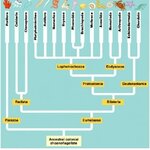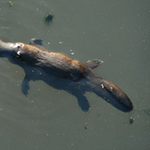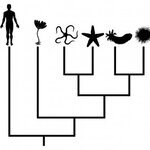Evolution

A new Rice University study's side-by-side comparison of 10 human genetic models to determine when 'mitochondrial Eve'(mtEve), the maternal ancestor of all living humans, lived uses a very different set of assumptions about the way humans migrated, expanded and spread across Earth - and it won't be without some controversy.
Mitochondrial Eve studies are an example of how scientists probe the genetic past to learn more about mutation, selection and other genetic processes that play key roles in disease but deterministic models may not be enough, says the new study. Statisticians…

Nature has evolved all strategies to combat heat and drought. Plants which look like stones store carbondioxide during night time in their cell vacuole in the form of malate derived from dark form of Phosphoenolpyruvate carboxylase which fixed carbondioxide during dark in cytoplasm. During day time this malate is transported to cytoplasm again from the vacuole where it is decarboxylated and the carbondioxide thus released is fixed again in regular fashion. This is done to keep stomata closed during day time when temperatures are high and it could harm the plants to transpire too much .…

The re-emergence of the citizen scientist began a major fast forward in 1999. Scientists at the University of California Berkeley launched a new project to virtually connect millions of computers around the world to simultaneously process and evaluate radio signals from space. The gift wrapping of this program appeared to be a colorful and unique screensaver on a participant's computer that would innocently chug along while sitting idle. The background of this program was working hard to identify subtle clues of the existence of intelligent life somewhere out in the…

One of the problems that gave rise to the gene-centric view is the prevalence of the notion that individuals tended to evolve for the "good of the species". In essence the gene-centric view argued that natural selection operated for the "good of the individual" and specifically for the genes that would be capable of transmitting information to future generations.
Therefore if the genes are the information carriers, then they would represent the only means by which future generations could carry on from previous successes.
The problem is that it is meaningless to discuss individual…

This story appeared on Science Daily, based on a press release from CNRS in France:
Segmentation Is the Secret Behind the Extraordinary Diversification of Animals
ScienceDaily (July 27, 2010) — Segmentation, the repetition of identical anatomical units, seems to be the secret behind the diversity and longevity of the largest and most common animal groups on Earth. Researchers from CNRS and Université Paris Diderot have shown that this characteristic was inherited from a common segmented ancestor thought to have lived 600 million years ago and whose presence "changed the face of the world…

The concept of "primitive" is one that is very often misunderstood.
Properly defined, "primitive" means "more like a particular ancestor", refers only to individual characteristics (not whole species or lineages), and is contrasted with "derived" (not "advanced" or "more evolved").
I have covered this and other misunderstandings of evolutionary concepts in various articles and I try to clarify these in my courses. But the intuitive interpretation in which one species is deemed more primitive than another is very hard to shake, including in the scientific literature.
An example:
This is the…

As I have explained in various blog posts and in this paper, it is a fallacy to assume that any one character found in a so-called "primitive" species alive today was also found in the ancestral species. All living species are modern species, and "primitive" vs. "derived" refers to characters, not whole species.
Anyway, New Scientist seems to have fallen for this in their interpretation of a recent paper.
Bellyflopping frogs shed light on evolution
Playing leapfrog would be tricky for the most primitive living frogs: those from the Leiopelmatidae family crash-land rather than touch down…

For the past year, I have been working with several colleagues to completely redesign our first year biology program at the University of Guelph. One of the aspects of the new "Discovering Biodiversity" course (which complements courses in human health and molecular and cellular biology) that I am most excited about is the use of inquiry cases to introduce major concepts in evolution, ecology, and organismal biology.
As part of one inquiry case, we will be exploring the issues surrounding freshwater mussels in the Great Lakes region, including the native diversity and the impacts of…

Nobel laureate J. W. Szostak delivered an interesting lecture on his experiments relating to the origins of life. His research group has set itself the goal of just getting some kind of protocell going, even if it is under totally artificial conditions. It looks like they've made good progress.

Recently I had a chance to visit the grave of my departed Professor Dr Karl-Hermann Neumann with his son Mr Rolf Neumann in Giessen Germany. Professor Dr Neumann worked with Professor F. C. Steward
FRS of Cornell Univessity who trained botanists of his times like Professor H. Y Mohan Ram and Professor B M Johari from India and other parts of the world in fifties and sixties.However I was happy to listen from his son Mr Rolf Neumann that during last 15 days of his death he has developed in interest in the topic what provides colours to the flowers ? Since then I have been thinking on this…